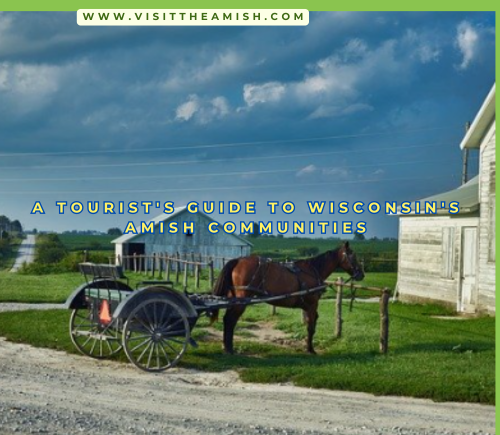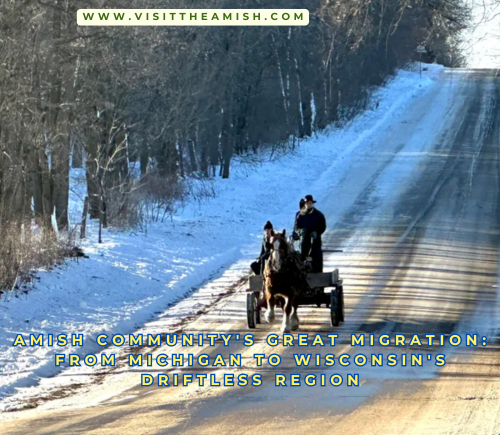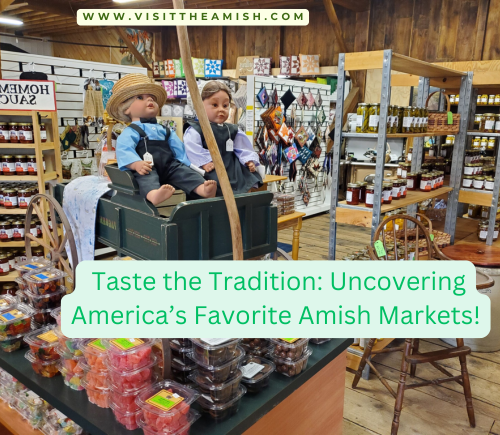Amish Community’s Great Migration: From Michigan to Wisconsin’s Driftless Region
In a scene reminiscent of bygone eras, a steady stream of moving trucks and vans made its way along the winding roads of southwestern Wisconsin last week. This unusual procession marked the arrival of nearly 30 Amish families from Michigan, seeking a new home in the rolling hills of the Driftless Region.
The group, primarily from Hillsdale County in southern Michigan, has chosen to establish a new settlement near the town of Viroqua in Vernon County, Wisconsin. This move represents one of the largest single Amish migrations in recent years and is expected to significantly impact both the departing and receiving communities.
“We’ve been planning this move for almost two years now,” said Eli Eicher, one of the community elders overseeing the relocation. “Our settlement in Michigan was getting crowded, and we needed more farmland for our young families. Wisconsin, with its strong agricultural tradition and beautiful countryside, seemed like the perfect fit for us.”
The decision to move was not taken lightly. Amish communities typically grow rapidly due to large families and high retention rates, often doubling in size every 20 years or so. This growth puts pressure on available land and resources, sometimes necessitating the establishment of new settlements.
Local Wisconsin residents have had mixed reactions to the influx of new neighbors. Sarah Johnson, who runs a small grocery store in Viroqua, expressed excitement about the newcomers. “I think it’s wonderful to see new faces in town. The Amish are known for their work ethic and craftsmanship. I’m looking forward to having their baked goods and handmade furniture available locally.”
However, not everyone shares Johnson’s enthusiasm. Tom Peterson, a long-time farmer in the area, voiced concerns about the impact on local roads. “Those horse-drawn buggies can really slow down traffic, and they’re hard on the pavement. I just hope the county is prepared to handle the increased maintenance needs.”
The Journey
The journey from Michigan to Wisconsin was a logistical challenge for the Amish families. While some belongings were transported by hired trucks, much of the move was accomplished using a combination of vans and smaller vehicles driven by non-Amish drivers hired for the occasion. This approach allowed for a more efficient and less disruptive relocation process.
Mary Yoder, a young Amish woman making the move with her husband and two small children, described the journey: “It was tiring, but also exciting. We’ve never traveled so far before. The children were fascinated by all the new sights along the way.”
The move was carefully orchestrated, with different groups departing on staggered days to avoid overwhelming the roads. Advance teams had already traveled to Wisconsin to prepare temporary housing and basic infrastructure for the arriving families.
Jacob Schwartz, another community member, explained the process: “We had crews working at both ends. In Michigan, we were loading up belongings and dismantling barns and workshops. In Wisconsin, we had people setting up temporary homes and preparing the land for our arrival. It’s a big undertaking, but we’re used to working together as a community.”
The New Settlement
The new Amish settlement is taking shape on several hundred acres of farmland purchased over the past year. The area, known for its picturesque valleys and ridges untouched by glaciers, offers rich soil and abundant water resources ideal for the Amish’s traditional farming practices.
Levi Miller, one of the first to arrive at the new settlement, described their plans: “We’re starting with basic crops like corn and hay, but we hope to expand into organic vegetables and maybe even some specialty crops like ginseng. The land here is very fertile, and we’re excited about the possibilities.”
The Amish are known for their sustainable farming practices, often eschewing modern chemical fertilizers and pesticides in favor of more traditional methods. This approach aligns well with the growing interest in organic and locally-sourced food in the region.
Impact on Local Economy
The arrival of the Amish community is expected to have a significant impact on the local economy. Amish-run businesses, from furniture workshops to bakeries, are likely to spring up in the coming months.
John Anderson, the Vernon County Economic Development Coordinator, sees potential benefits: “The Amish bring with them a wealth of skills in traditional crafts and agriculture. We anticipate this will create new economic opportunities, not just for the Amish themselves but for the wider community as well.”
Already, plans are underway for a weekly farmers’ market where Amish families can sell their produce and handcrafted goods. Local tourism officials are also considering how to respectfully incorporate the new Amish presence into their promotional materials, recognizing the draw that Amish communities often have for visitors.
Challenges and Adjustments
The integration of such a large Amish community into the existing social fabric presents both opportunities and challenges. One significant aspect is education, as the Amish will establish their own schools for their children.
Linda Thompson, superintendent of the Viroqua Area School District, commented on the situation: “We understand that the Amish community will be setting up their own schools. While we won’t be directly involved in their education system, we’re open to providing any support or resources they might need as they establish their schools here.”
Amish schools typically provide education through the eighth grade, focusing on basic academic skills and practical knowledge relevant to their way of life[1]. These schools are usually one-room schoolhouses, governed by a local school board made up of Amish parents[2].
Traffic safety is another concern being addressed by local authorities. Sheriff Mike Roberts explained the measures being taken: “We’re installing additional signage to alert drivers to the presence of horse-drawn buggies, and we’re conducting community outreach to educate both Amish and non-Amish residents about sharing the road safely.”
Cultural Exchange
Despite their reputation for isolation, many Amish communities maintain cordial relationships with their non-Amish neighbors. This new settlement in Wisconsin appears to be no exception.
Rebecca Miller, an Amish woman in her early 30s, expressed hope for positive interactions with the local community: “We may live differently, but we share many of the same values – family, hard work, and faith. We’re looking forward to being good neighbors and contributing to the community in our own way.”
Local resident Emily Thompson echoed this sentiment: “I’ve already met some of the Amish families, and they’ve been nothing but kind and friendly. I think we can learn a lot from each other.”
Plans are underway for a community potluck to welcome the new arrivals, with both Amish and non-Amish residents contributing dishes. This event, scheduled for next month, is seen as an important step in building bridges between the two communities.
Looking to the Future
As the Amish families settle into their new homes and begin to establish their farms and businesses, there’s a sense of optimism about the future of this new settlement.
Bishop Samuel Bontrager, one of the spiritual leaders of the community, reflected on their hopes: “We came here seeking a place where we can live according to our beliefs and provide for our families. We pray that God will bless our efforts and that we can be a positive presence in this beautiful part of Wisconsin.”
The migration of this Amish community from Michigan to Wisconsin is more than just a change of address. It represents the continuation of a way of life that has persisted for centuries, adapting to new surroundings while maintaining core values and traditions.
As the sun sets over the rolling hills of the Driftless Region, the sound of hammers and saws fills the air as new barns and homes take shape. The arrival of the Amish in this corner of Wisconsin marks the beginning of a new chapter, not just for the Amish families themselves, but for the entire community that now calls them neighbors.
Only time will tell how this unique cultural integration will unfold, but for now, there’s a palpable sense of anticipation and hope on both sides. As Eli Eicher put it, “We may be new to Wisconsin, but we’re here to stay. This is our home now, and we’re committed to making it thrive.”
Citations:
[1] https://www.ohiosamishcountry.com/articles/amish-education
[2] https://groups.etown.edu/amishstudies/social-organization/education/
[3] https://amishrules.com/amish-education/
[4] https://amishrules.com/do-the-amish-go-to-school/
[5] https://ohiosamishcountry.com/articles/things-amish-children-learn-in-school-not-in-a-textbook
[6] https://www.discoverlancaster.com/amish/education-work/
Like this:
Like Loading...


















